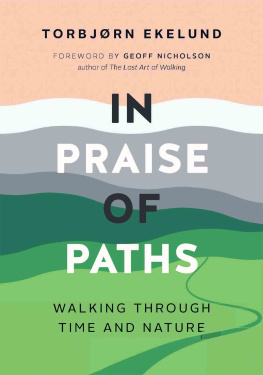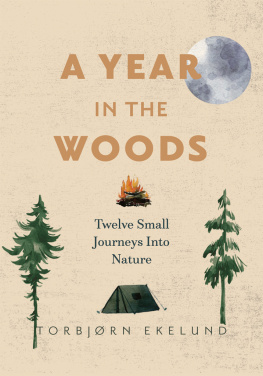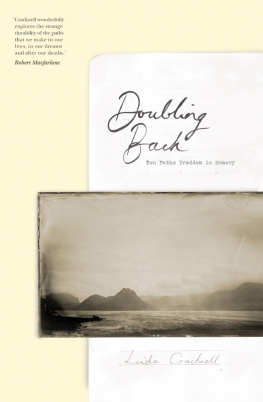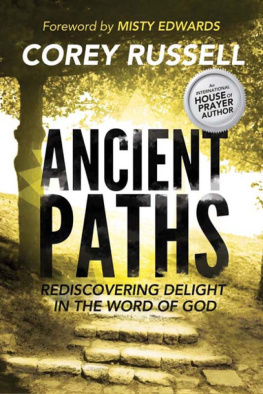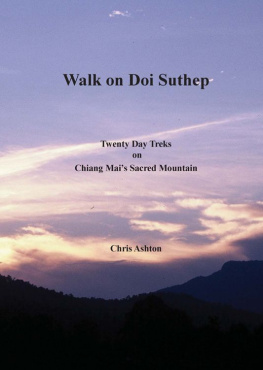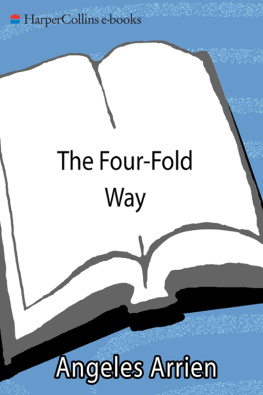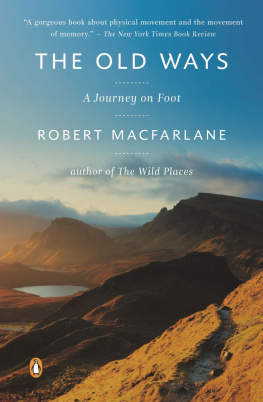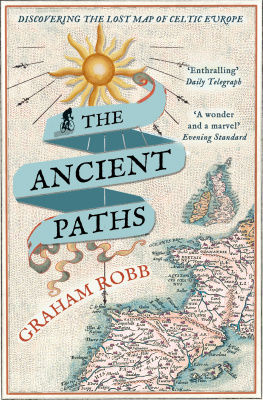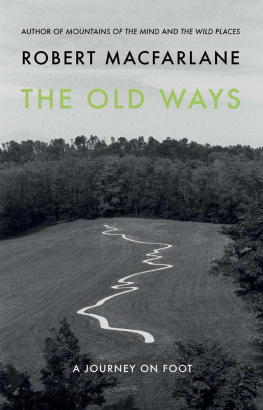TRANSLATION BY
BECKY L. CROOK
TORBJRN EKELUND
FOREWORD BY
GEOFF NICHOLSON
Copyright 2020 by Greystone Books
Originally published in Norway in 2018 by Cappelen Damm as Stiens
Historie: En Reise Til Fots
English translation copyright 2020 by Becky L. Crook
Foreword copyright 2020 Geoff Nicholson
20 21 22 23 24 5 4 3 2 1
All rights reserved. No part of this book may be reproduced, stored in a retrieval system or transmitted, in any form or by any means, without the prior written consent of the publisher or a license from The Canadian Copyright Licensing Agency (Access Copyright). For a copyright license, visit accesscopyright.ca or call toll free to 1-800-893-5777.
Greystone Books Ltd.
greystonebooks.com
Cataloguing data available from Library and Archives Canada
ISBN 978-1-77164-495-2 (cloth)
ISBN 978-1-77164-496-9 (epub)
Copy editing by Lucy Kenward
Proofreading by Stefania Alexandru
Jacket and text design by Belle Wuthrich
Typesetting by Fiona Siu
Greystone Books gratefully acknowledges the Musqueam, Squamish, and Tsleil-Waututh peoples on whose land our office is located.
Greystone Books thanks the Canada Council for the Arts, the British Columbia Arts Council, the Province of British Columbia through the Book Publishing Tax Credit, and the Government of Canada for supporting our publishing activities.
This translation has been published with the financial support of NORLA.



CONTENTS
by Geoff Nicholson
The world reveals itself to those who travel on foot.
WERNER HERZOG
FOREWORD
ONE EXTRAORDINARY SIDE effect of reading Torbjrn Ekelunds In Praise of Paths is that as I wander through the world I now constantly ask myself, Is this really a path that Im walking on? Sometimes the answers an unequivocal yes, and on some occasions I know Im walking on a special kind of path: a footpath, a garden path, a tow path, a bridle path. This is all very reassuring.
But at other times the question gets far more complicated. I ask myself, Am I perhaps walking on a trail or a track, along a lane or a pedestrian way or a desire line? In the part of England that I come from there are also gennels (sometimes jinnels), and elsewhere in England there are snickets and twittens. I find myself wondering whether these are types of path, or whether theyre physically and philosophically something quite different, perhaps not paths at all.
Well, I dont have any hard-and-fast answers to these questions, and fortunately, Torbjrn Ekelund doesnt seem to eitherhe is not a dogmatic writer or thinker, which is just as well. And perhaps my occasional puzzlement may be an indication that a path is not such a simple thing as it first appears, as many would suppose, which is to say that a path is rarely just a path. Yes, it may be a means of getting from A to B (or Z), but it can very often be metaphorical or allegorical as well.
Ekelund points out that if you google the word path youll have to scroll through countless religious or spiritual references, pages about yoga, meditation, mindfulness, everything other than a physical path. There will also be references to Buddhism, Hinduism, Christianity, and Islam, all of which, one way or another, employ the idea of the path as a symbol of spiritual progress and development.
In your online search you might well also find some much less spiritual usages, such as the Shining PathPerus revolutionary communist group founded in the late 1960s, or Annie Besants My Path to Atheism, written in 1878. All roads lead to the path, it seems.
You may also find admonitions to stick to the straight and narrow path, but no serious traveler or walker would obey that rule, and Ekelund certainly doesnt. He roams, he strays, he meanders, he wanders off the beaten path, both physically and intellectually, in all the best possible ways.
His range of references is especially interesting and novel to an Anglophone reader. Sometimes the pathfinders he refers to are the well-known usual suspectsVirginia Woolf, Emma Gatewood, Edward Payson Weston, Werner Herzog, but he introduces us to a lot of far less familiargenerally Scandinavianfigures, such as Bjrn Amsrud, the first person to walk the length of Norway; and the philosopher Arne Nss, who regularly hiked to his mountaintop cabin but always went by a different route. I was especially fascinated by Joshua French, a Norwegian mercenary jailed in the Democratic Republic of the Congo, who spent every day of his incarceration walking back and forth along a corridor that was only fifty feet long. I was also pleased to discover the Norwegian word friluftsliv, a word in one sense meaning simply fresh air life but carrying with it the philosophy that spending time outdoors is essential to physical and mental health. These ideas in themselves might send a reader to do some more googling, or perhaps even to take a trip to a well-stocked library.
One of the things Ekelund gets absolutely right is the delicate balance between the general and the specific, between the public and the private, between the grand narrative and a wholly personal one. He shows that paths take us forward but they also take us back into the past and into our selves. He describes the many walks hes taken as an adult, but these lead him back to a path that went to the cabin where he spent childhood vacations with his family. He revisits the place both on foot and in his memory, to create some wonderfully moving passages about the flow of time, and about mortality.
In the Zen sense, we obviously cant walk the same path twice; both the path and our selves are different at every moment. But Ekelund also tells us, if we need to be toldand perhaps we dothat the path we walk today always connects with paths that others have taken before us, and that paths always involve a connection with other walkers. He writes, No single person is responsible for a path; instead, it is the sum of the actions of numerous people over a time that dates back to the distant past. This strikes me as a very profound perception; something that we recognize as obviously true the moment we think about it, and yet most of us have never thought about it in quite that way.
There are two other pieces of Ekelund wisdom that I know will live with me. First, that The history of the path is the history of us, and second, that The path is order in chaos. Words to live by, and words by which to lose and find yourself.
GEOFF NICHOLSON
THE BEGINNING
WE WERE NOMADS once. We migrated, never remaining for long in a single location. The world lay open and undiscovered, borderless. We could walk in any direction, follow our will, explore new lands.
Now we are sedentary. We live our lives sitting down. Drive the car to the store. Fly if traveling longer distances. Call to have the pizza delivered to our door and purchase automatic lawn mowers, robots to do the work for us while we sit sunning and thinking about more pressing matters than mowing the lawn.

